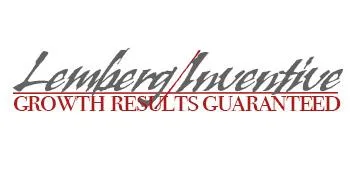The Faster Growth Now Blog

The No-Strategy Strategy: How to Grow Your Business 10X Without Risk
If you run a business, growth is top of mind. You likely want more customers, more revenue, and more profit. But how? Searching for the next "big idea" is tempting but risky. Attempting huge, sudden changes tends to backfire. What if there was a near-effortless way to double, triple, or even 10X your business with minimal risk? There is, and it stems from the power of compounding small gains.
The Approach: Leverage and Optimization
I call it the “no-strategy strategy.” Rather than hunting for a silver bullet, it focuses on improving key leverage points in your existing business by small, incremental amounts. When done consistently over time, these minor improvements compound upon each other, ultimately transforming your results.
The premise is simple: identify parts of your business where a little better performance disproportionately improves your bottom line. These are your leverage points. Systematically make them a bit better, analyze the impact, then do it again. Continually optimize leverage points and exponential growth follows.
Leverage points vary but often include:
- Pricing
- Long-term customer value
- Size of first purchase
- Conversion rates
- Profit margins
Rather than reinventing your business, the no-strategy strategy is about perpetual fine-tuning. Think “evolution” rather than “revolution.” No need for massive risk or capital outlays. Just modest, measurable gains sustained over time.
Why It Works
Two dynamics explain the effectiveness of the no-strategy strategy:
1. Leverage - Small improvements to high-impact areas (like pricing or conversions) scale up results.
2. Compounding - Incremental changes build on previous gains. Growth accelerates.
Consider pricing. For a business with a 25% profit margin, raising prices by 25% doubles profits instantly. Thanks to compounding, year two’s 25% price increase would double profits again. Your business just quadrupled in two short years with simple price hikes!
This works across leverage points. Tweak pricing, conversion rates, first purchase size, and long-term value in 15% increments annually. Your business doubles in five years through the power of compounding small wins.
Executing the No-Strategy Strategy
The no-strategy strategy is simple in theory but does require discipline in practice. Follow these steps to leverage it in your business:
1. Identify Key Leverage Points
Analyze your business model to pinpoint parts that provide disproportionate impact if improved. Common leverage points include pricing, profit margins, customer lifetime value, conversion funnel, size of first purchase, etc. Prioritize the ones providing the most leverage.
2. Establish Metrics
Measure current performance on key leverage points. You can’t improve what you don’t track. Define clear metrics you’ll monitor for each leverage point.
3. Make Incremental Changes
Brainstorm small tweaks to improve each leverage point by 10-15%. Pick one or two easy changes to implement. Avoid “boil the ocean” overhauls.
4. Analyze and Repeat
Give changes time to take effect, then analyze impact on metrics. Keep what works, tweak what doesn’t. Repeat process steadily to drive incremental gains.
The Growth Flywheel
When done consistently, the compounding impact from optimizing leverage points triggers a growth flywheel. Better pricing, conversions, and first purchase size leads to more profit. More profit allows greater marketing investment driving more customers and revenue. Which funds more marketing and growth. And on and on.
The flywheel accelerates growth exponentially over time. Powered by small, incremental gains. Not risky bets.
This flywheel effect explains how companies can double or triple revenue year after year. While competitors stall. They’ve mastered the no-strategy strategy.
Time to Boost Your Flywheel!
Growing a business 10X doesn't require brilliant tactics or excessive risk if you leverage compounding gains. Sustainable, exponential growth stems from incremental progress.
The no-strategy strategy leverages this reality by optimizing leverage points through perpetual small improvements. When compounded, these tiny changes transform results over time.
So don’t waste time hunting elusive silver bullets. Identify your leverage points and start fine tuning. Be patient. Measure rigorously. And repeat. Small gains compound into enormous impact when done right.
Time to tune your growth flywheel!

